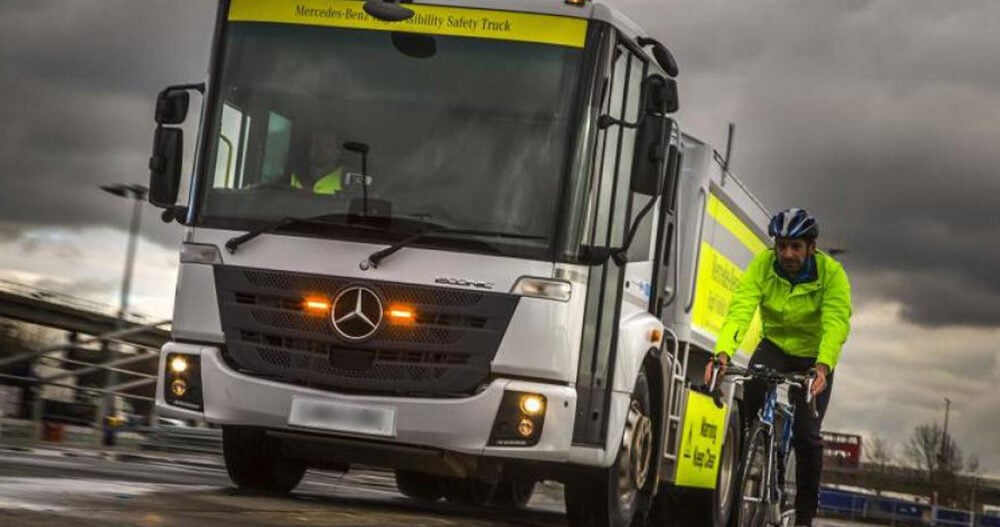On Monday, 28th October 2025, DVS (Direct Vision Standard) Phase Two comes into effect across Greater London, bringing updated regulations for heavy goods vehicles (HGVs) entering the capital. These new standards aim to further reduce road accidents, improve safety, and ensure that London’s roads are accessible to vulnerable road users. If you’re an HGV operator, here’s what you need to know about DVS Phase Two, the minimum requirements for vehicle compliance, and the implications of non-compliance.
What is the Direct Vision Standard (DVS)?
The Direct Vision Standard is a Transport for London (TfL) initiative introduced to reduce the number of accidents caused by HGVs with poor direct vision from the driver’s cab. The DVS rating is based on how much an HGV driver can see directly through the windows of their cab, without relying solely on mirrors or cameras. Vehicles are rated between one and five stars, with one-star vehicles offering limited direct vision and five-star vehicles providing the highest level of visibility. DVS is designed to lower the risk of collisions with pedestrians, cyclists, and other vulnerable road users by ensuring that drivers have a clearer line of sight, reducing blind spots.
All HGVs weighing over 12 tonnes must meet new requirements to legally operate in Greater London. While Phase One of the DVS only required HGVs to meet a minimum one-star rating, Phase Two raises this to a minimum of three stars for direct vision. Vehicles that do not meet this minimum must install additional safety systems to help drivers better detect vulnerable road users.
The required additional safety systems include:
- Blind Spot Cameras: These offer a live feed of blind spots to the driver, reducing the chance of collisions.
- Side Sensors: Installed to alert drivers when cyclists or pedestrians are within close range.
- Warning Alarms: Audible alarms warn pedestrians and cyclists when the vehicle is turning or reversing.
- Proximity Warning Systems: Used to detect when people or other road users are in close proximity, triggering visual or audible alerts for the driver.
- Class V and VI Mirrors: Mirrors designed to give drivers better visibility of the front and side of the vehicle.
In addition to the equipment, drivers are encouraged to undergo regular training to remain aware of vulnerable road users and the proper use of the additional equipment.
Failing to comply with the DVS Phase Two requirements will result in significant penalties for HGV operators. Non-compliant vehicles entering Greater London without a valid Safety Permit face fines of up to £550 per day, with the potential for cumulative penalties for repeat breaches. Beyond fines, operators may face delays as non-compliant vehicles could be barred from entering certain zones, impacting delivery schedules, and could damage the reputation of haulage companies that fail to meet the necessary safety standards.
For operators, investing in safety equipment and ensuring their fleets meet the DVS Phase Two requirements is critical. Compliant vehicles will not only help avoid financial penalties but also contribute to the overall safety of London’s roads.
The DVS initiative has shown promising results in its aim to reduce fatalities and serious injuries on London’s roads. Since its introduction, there has been a marked reduction in HGV-related accidents involving pedestrians and cyclists, underscoring the effectiveness of the DVS system in enhancing urban road safety. With Phase Two’s introduction, the Direct Vision Standard is expected to further decrease accident rates, making London a safer place for all road users.
As the capital continues to grow, the need for improved road safety measures becomes even more crucial. The DVS represents a major step towards achieving London’s Vision Zero goal – the aim to eliminate all deaths and serious injuries from the city’s roads by 2041. With DVS Phase Two now in effect, HGV operators have a clear responsibility to comply with these new standards and to prioritise safety as they transport goods across the city.
Author: Mark Salisbury, Editor, Fleetpoint





















